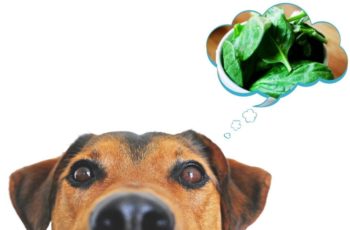I hope you and your companion animals all survived Independence Day, the least favorite holiday of many of us dog owners. I live close to a casino that not only puts on its own fireworks show, but invites people from the surrounding area – where setting off fireworks is prohibited by county law – to set off their own fireworks in the casino parking lot. Oy! Inadvertently, we moved to a twice-a-year war zone (there are also lots of fireworks getting set off on New Year’s Eve.)
Otto was the one dog in my family who, late in life, developed a severe fear of fireworks. Having passed last month, he didn’t have to suffer through this experience again. And, fortunately, my 7-year-old dog Woody couldn’t care less about the booms, crackles, and flashes in the sky. The data is not yet clear whether Boone, my 1 ½-year-old dog, will develop a fear of fireworks. Last year, when he was just a pup, he paid them no mind. This year, he was concerned at the loudest noises, and kept close to me throughout the night, but didn’t develop the full-on wide-eyed, panting panic that Otto displayed in the years before he lost the ability to hear the racket.
Though the last of my foster puppies had spent the previous week on the adoption row at the shelter, I was hosting the final four of them over the long holiday weekend that the shelter was closed, so they didn’t have to spend all of those days in a tiny kennel without the possibility of meeting potential adopters. While they ordinarily sleep in a doghouse in a pen outside my house, I didn’t want them exposed to the July 4 cacophony. I kept them with Boone and me in my office, with a ceiling fan whirring and the evaporative cooler roaring and music playing for good measure. They looked mildly concerned at the loudest booms, but around midnight things finally quieted enough outdoors that I was able to turn off all the noise-masking measures and get some sleep.
The morning after the 4th, I brought the puppies back to the shelter, and I hope they get adopted soon. I think we can all agree that all puppies are cute, but some are cuter than others – and these are not the cutest puppies I’ve ever fostered. They don’t resemble any easily identifiable breeds, which makes it more difficult to market them. We can point to their mother, who is also still at the shelter (more about that in a moment), but she’s not the cutest dog, either, though she has a sweet personality and is a great size: about 30 pounds. (I find that’s sort of a sweet spot in size for people who don’t want a small or a large dog.) But she’s also sort of funny-looking; she has a small head and a pointy nose with a bit of an underbite, like the dog in The Simpsons. So the shelter staffers have not been pointing out the puppies’ parentage, but simply mentioning that their mom is about 30 pounds.
The mothers of both litters of puppies I have been fostering are heartworm-positive; whomever takes them home is also going to have to take them through treatment for their heartworm infections. It always takes a while to find adopters who are ready and able to take on that responsibility and cost for a new dog. This shelter, like most, lacks the funding to treat heartworm-positive dogs, though they start pre-treating the dogs with doxycycline, which harms Wolbachia, the bacteria that infect heartworms. This reduces the dog’s side effects caused by the death of the heartworms. The shelter also incentivizes the adoptions of these heartworm-positive dogs by waiving adoption fees, but it can take months and months to find someone to take on this project.

I have been worrying about them, and also worrying about one of the puppies, whose behavior is markedly strange. I think she is the first truly behaviorally divergent puppies I have ever fostered, in that she’s markedly uninterested in humans or whatever affection they have to offer. She is also the first pup I’ve ever fostered (out of nearly 200 over the past 15 or so years), who, when I first brought this liter home, would immediately separate from the rest of the puppies and go wandering all over my property by herself. She’d never cry or whine when she was clearly “lost,” her rambling having taken her to the far side of my two acres; she’d just lie down and nap until I found her. I quickly learned to watch her like a hawk when I brought the pups out of their pen to potty and play, so I could keep track of her perambulations and bring her back before she got too far away.
She also shows not one iota of pleasure when being held or petted, unlike the rest of the wagging, happy pups who love human attention, petting, and play. When picked up, she freezes like a wild animal, tense, with her paws curled almost into fist shapes. She won’t make eye contact, but slowly, stiffly, turns her head away if you try to look directly at her while holding her – and holding her is the only way you can pet her; she backs away and runs away if you reach toward her.
Fortunately, she does like treats, and will come and sit politely with the rest of the puppies for treats – the one behavior that all my foster pups learn while they stay with me, whether for a day or more than months. And while she always sits at the back of the group so she can make a quick getaway with her treats, in recent weeks, I’ve been insisting that each pup tolerate a light touch on the back with one hand before they can take the treat I’m offering with the other hand. That’s increased her tolerance for being touched – but I don’t think there’s any way that she’s going to be chosen over the puppies who are pro-social and affectionate. I see a potential longer-term fostering project in my future.


